
22 minute read
From the Editor 4 A letter from our Editor Ashley Bray

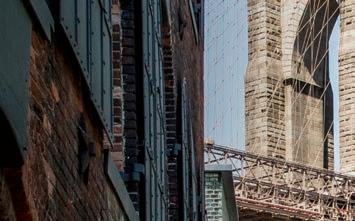
Advertisement

EMBRACING THE GREAT OUTDOORS IS A SOLID FIRST STEP IN ECONOMIC RECOVERY.
Outward BOUND


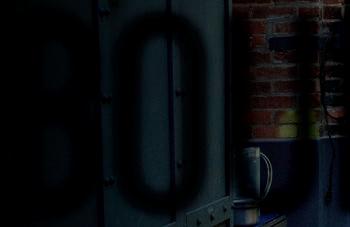


BY ELYSE GLICKMAN
As the country reopens, there will be an adjustment period for the new “business-as-usual” model, including an increased dependence on outdoor seating.
In other words, you’ll be venturing into a new frontier of hospitality. As with all treks, you’ll need some new gear for the journey, along with direction from establishments that have already blazed a trail into the brave new world of safe service with a smile.
With good weather nationwide, summer is the optimal time to navigate this new frontier. Bars with existing outdoor seating will have to reconfigure these spaces. Those without an outdoor area will have to figure out if it’s possible to take their indoor experience outside. SETTING UP BASE CAMP Although rethinking your venue’s layout can seem daunting, New York City-based hospitality designer Branko Poto nik, principal at the Interior Design Hall of Fame-winning firm CetraRuddy, believes making changes from the inside out (and vice versa) provides restaurant and bar owners an opportunity to develop better practices that will make them stronger.
“Over the next three to four months, some social distancing ideas you’ll adopt will also work well in your restaurant’s indoor areas. While I believe the original seating arrangements will eventually return, on the short term, everybody will be setting up fewer tables and increasing the required space per person,” says Poto nik. “Restaurant owners will also have greater incentive to rethink outdoor and indoor spaces to help make cities greener, especially when their designers present them new plans to improve the way outdoor spaces are divided.”
Poto nik also stresses the need for oneway paths in and out of the kitchen, to and from the main bar, and in and out of the restroom to ensure staff and guests face the same direction. Spaces where food and drinks are prepared should be out of the customers’ view, and there should be no seating near kitchens or bars. Fresh ingredients used at the bar should be in closed containers, and management should also devise a contactfree way for guests to receive their bills and make payments. He also envisions serving stations, indoors and out, that are equipped with a washing or disinfecting section so staff can wash hands as needed
and point-of-sale waiting stations with wipes to keep all surfaces clean.
“When people enter a space at one point and exit at another point on the opposing side, it lessens the possibility of physical contact between staff members and guests,” he says. “When management takes proper precautions, it will build customer confidence. I see an increased use of disposable antibacterial surface [coverings] on tables and seats. [For those reasons,] management should encourage guests to book seating in advance, as it will free staff up to properly prepare and sanitize tabletops and chairs.”
Kenneth Danko, Owner/Chef of the Devilicious Eatery and Apparition Room cocktail bar in Temecula, just outside of San Diego, has put many of these ideas into practice as has the management of the Tacolicious restaurant group in San Francisco. Danko says there is now six feet of table separation in the Devilicious patio area that was originally designed for a 40-guest capacity. Should Temecula’s city government allow street dining, he will take advantage of added sidewalk space and invest in some “inexpensive but sustainable partitioning made up of pallets or plants” so guests are not just sitting at a table on asphalt. The host station will be moved to be in view of the outdoor seating area, and extra staff will be added to guard customers’ credit cards until they settle their open tabs. The food truck part of the Devilicious business model, meanwhile, allows for positive collaborations with other local businesses to help them reopen in accordance with the governor’s guidelines.
“I think what helped us a lot is that [the city] allowed us to put some tables in the sidewalk,” says Lalo Durazo, who co-owns Bakan in Miami. “When we first built the restaurant, the city required us to make the sidewalk in front of it wider. It worked out great for us because the wider sidewalk allowed us to add three large tables and a line of cacti to separate the seating area. While we removed some tables from our original covered terrace to make it more spacious, bringing those moved tables to the sidewalk helped us make all of our spaces flow together in a more visually
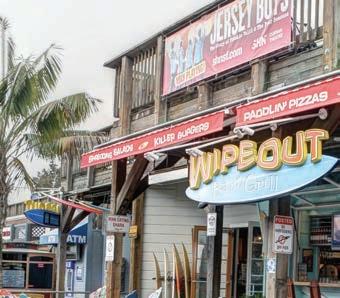
seamless way while still operating under COVID-19 guidelines mandating we maintain a 50% capacity or less.”
Tacolicious’ Director of People Korey Reynolds says existing limitations on in-store capacity prompted management’s decision to repurpose indoor dining room tables for outdoor seating in a given location’s patio, adjoining sidewalk, parking lot, or middle of the street-seating. “We’re using plants to soften up the spatial divide between tables,” says Reynolds. “We’re designating specific entry and exits, and having hosts guide guests through the restaurant and squirting hand sanitizer on everyone, or at least making it available for self-application.”
“Most of our properties offer outdoor seating,” says Corporate Beverage Director Andrea Cornwell for Ohio-based national restaurant group Cameron Mitchell, including the upscale Ocean Prime steakhouses. “Beyond that, we have studied floor plans, marked exact distances, and posted those floor plans for anyone to review. We have bought Plexiglass dividers where applicable. Although we have always had high cleanliness standards, we sanitize the tables and chairs between each seating and keep cutlery off of the tables.”
According to Poto nik, a portable outdoor bar can be a good marketing tool as it is a conversation starter, can readily be customized and adapted for





Recovery depends on how well staff adapts to enhanced cleaning practices.


promotions, and instill guest confidence by eliminating eyesores such as stacks of dirty plates.
The Founder of Ultimate Bars Travis Crivaro enumerates on how those attributes helped win him an impressive roster of clients through the years, from Disneyland to Hilton Hotels to Princess Cruise Lines to Los Angeles Dodgers Stadium.
The shutdown prompted Crivaro to take his business in new, necessary directions. The Ultimate Bars range has since expanded to offer “Ultimate Shields” and “Bar Guards” as well

as event cubes, movable bar tables, and displays, which add an extra layer of social distancing in settings where crowds typically form—especially around the bar area itself. Another advantage of Crivaro’s American-made mobile bars and shields is that they are made with acrylics and other materials that are easy to clean with common cleaning solutions and supplies.
“The great thing about portable and satellite bars and tables is that they will help reopening businesses set up outdoor areas that will prompt customers ordering drinks to keep the lines moving,” says Crivaro. “Anybody out there who needs to prevent bar crowding can buy a few of our portable bars and put one of each on the end of a patio.”
A BRIEF FIELD GUIDE TO NEW RULES & REGULATIONS Keeping tabs on ever-changing local and regional government guidelines can go a long way.
Tacolicious’ Reynolds is doing just that. “San Francisco is attempting to work something out tantamount to the Slow Streets program already in effect elsewhere around the Bay Area (like Berkeley), but there’s no final action yet. The Valencia Corridor Merchants Association (or VCMA, serving San Francisco’s Mission District) is fielding interest in an attempt to sway city supervisors to light up the streets to make them more appealing to foot traffic, but those streets are not ready for that at the moment. In the L.A. area, Manhattan Beach is working on a program to close off parking spaces to allow for additional seating. We’ll have to wait to see if these are turned into public parklets or can be used as reserved seating for restaurants. So far, it is a game of, ‘wait and see what others do.’”
Reynolds also says that while the restrictions on the sale of to-go cocktails have been loosened, local law enforcement has been cracking down on open-container issues. “To prevent fines and the dreaded Department of Health shutdown, we’re policing the area directly in front of our restaurant to prevent crowds and impromptu block parties,” he says.
Alexa Sol, co-owner of Quinto Sol in Redwood City and several other Bay Area eateries, says there’s a lot involved in helping restaurants rebuild their businesses. “Cities need to figure out how to process business owners’ permits to operate outdoors in spaces adjoining their premises more quickly, and it would be good if the temporary outdoor space they may use can be rent-free or have a low-cost rent,” states Sol. “From my standpoint, successful recovery will ride on how well management coaches its staff to adapt to enhanced cleaning practices and the like. We have to enforce this in a way that reinforces habits to the point where they become second nature.”
As the City of San Francisco actually owns the land the Downtown Yerba Buena Gardens location of Samovar Tea Lounge stands on, Owner Jesse Jacobs says that the local government supported the placement of outdoor tables throughout the park and gardens to offer six-foot-plus spacing between tables to facilitate Samovar’s reopening.
“We have worked closely with the health department to implement their protocols and recommendations, including a super sanitation wipe down process,” says Jacobs. “They will be sending us specifics with procedures clearly mapped out.”
Although the Cameron Mitchell group has size and national
reach as advantages, some adaptations had to be considered more carefully given the differences in liquor laws and revised health codes from state to state and city to city. Cornwell has found that what her firm has done with the Columbus-area restaurants sets a good precedent for locations elsewhere.
“Although we have not shut down streets, restaurants in our shopping centers are allowed to provide to-go cocktails that patrons can enjoy in nearby parks,” shes says. “We also have a health and safety task force that stays at the forefront of any updated suggestions/ requirements from our health officials. We update our training plans weekly.”
“Most of the staff we let go when we closed came back, and this helped a lot because they make up an incredible team and communicate well with one another,” says Bakan’s Durazo. “We spent many hours making sure that everybody knew what needed to be done by going through all 42 different points of the guidelines (the state, county, and city governments contributed) that related to staff training to enforce social distancing, keep supplies sanitary, and provide customers guidance on what they needed to do to adhere to the rules. After we determined the entire staff was fully prepared to meet those requirements, we reopened, and so far, everything has run smoothly.”
There are also other tools management can use. Hygiena prepares bespoke cleanliness protocols for restaurants. Services include spot testing of high-touch points at a client’s restaurant to produce quantifiable data that can be applied to custom sanitation protocols for staff.
THE RIGHT GEAR The sustainability-versus-sanitary debate has intensified. While restaurateurs like Alexa Sol and Miami-based Bakan owner Lalo Durazo say it is best to further enhance existing industrial dishwasher usage rather than use disposable items, Devilicious has also implemented disposable glassware and paper-lined metal trays to be more sustainable.
Lisa Bole, director of Sales for plastic drinkware manufacturer Tooters, says that local governments across the country now have a recycling facility that will pick up at no charge to the venue. And, with many locales now allowing or working on legislation for cocktails to-go, she argues that “to-go” vessels may be the best way to serve beverages across the board.
“How often have you received a glass in a bar/restaurant that still had lipstick or food particles on it?” says Bole. “With plastic drinkware, the beverage is served in a single-serve vessel and disposed of after use or can go home with a ‘buy the drink/take the glass’ arrangement. Plastic drinkware is not only safe from a sanitary point of view, but also is safer for use in outdoor seating areas. Dropping a glass beer mug will add danger and risk of injury. Drop a plastic beer mug and you simply have a mess to clean up. Furthermore, several insurance companies offer discounts to their premiums when plastic is utilized.”

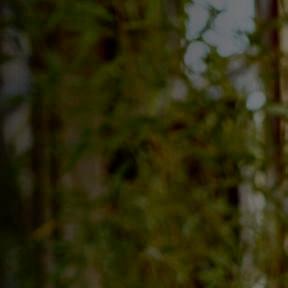








DON’T REOPEN, Reset
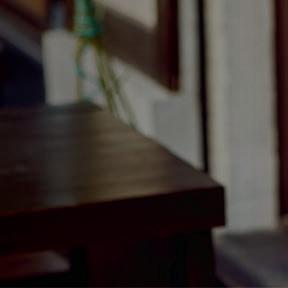

WHAT CHANGING CUSTOMER PERCEPTIONS MEAN FOR YOUR BAR IN THE AGE OF COVID-19.
In addition to profits and the bottom line, one of the ways COVID-19 has hit bars and restaurants especially hard is through the customer experience. With restricted occupancy limits, the need for masks and social distancing, and increased cleaning protocols, going out for a drink and a bite to eat looks vastly different.
“Everything’s changed about the
BY ASHLEY BRAY
experience,” says Deb Gabor, brand guru and founder and CEO of Sol Marketing, a brand strategy consultancy. “What I see is this very sterile environment, something that is lacking energy, it has no soul, it has no feeling. I think that that’s really dangerous for an industry that relies on people having great experiences.”
And it seems that fears about health will be with us for a while. “Even as the virus dissipates and lessens, people will still have germs and safety on their minds,” says Jon Taffer, industry expert, the host of Bar Rescue, and an entrepreneur with new ventures that include the opening of Taffer’s Tavern restaurant and the launch of Taffer’s Mixologist. “It’s just going to be the way we operate.”
As a result, many consumers are not ready to return to bars and restaurants. According to an ongoing study by AMC
Global and OpinionRoute on consumer preferences during COVID-19, for bars and restaurants with outdoor seating, 47% of respondents believe now is the right time to open in their state, and 38% believe it is too soon. For indoor seating, 29% believe now is the right time in their state, and 63% believe it is too soon for indoor dining.
How do you help alleviate these fears? By making customers feel safe. According to another wave of the same ongoing study quoted above, 90% of consumers want to hear how companies are protecting them from COVID-19 exposure.
Barmagic Principal Tobin Ellis, who’s been in the hospitality industry for 30 years providing operational consulting and designing bars, says in order for guests to feel immersed in the hospitality experience once again, they must feel safe. “We need to continue to clearly and proactively message the high levels of sanitation, cleanliness, and safety that our industry has always subscribed to,” he says. “If we want people to come back and buy into these little worlds that we’ve built, then we need to realize that they’re not going to be able to feel relaxed and immersed without a lot of human interaction and hospitality that creates that. Whether it’s the safety messaging, the cleanliness, whether it’s a change to the dynamic of service or the menu, we have to understand that this is our responsibility to figure out where the intersection of compliance and safety in this COVID-19 age and hospitality lie.”
Taffer believes customers are going to return to bars in three waves. The first third are young, fearless consumers who will return right away.
The second third he dubs the “reserved third.” “They’re going to reserve their decision for a couple of weeks to see what happens with the first third,” says Taffer.
The last wave is the “certain third.” “They’re not coming out until they’re certain they’re safe. They tend to be a little older demographic, and they tend to be ones with preexisting conditions so they’re more conservative. But here’s the kicker: They’re the ones with the disposable income,” says Taffer. “So when we take a look at the future, we have to reassess our value proposition. We really need to understand our customers now



like never before.”
For Taffer, success in this new world depends on identifying and meeting new customer perceptions and expectations about safety. “The biggest issue we have is how do we control how people perceive the safety of our businesses?” he says. “Safety now comes before product quality. Safety now comes before mixology.
“If we don’t master our perception of safety, and if we don’t match our assets, our music, our environment, our price points, and our products to the shifts that this post-pandemic world is going to create, we’re going to miss and we’re going to lose. And that’s why I call this a reset and not a reopening. Because none of us are reopening like we used to, and all of our customers are going to change.”
The first step is in recognizing how customers have changed in light of COVID-19—especially your bar’s specific demographic. “We need to make certain that we provide the environment that checks the first box on their list, and for the vast majority of the population, the first box on the list is: Is it safe?” says Taffer. “The second box on the list is: Do I connect to the environment?”
What makes an establishment “safe” will differ for each customer. “The whole issue of the pandemic is very polarizing,” says Gabor, who explains that one camp feels it’s an
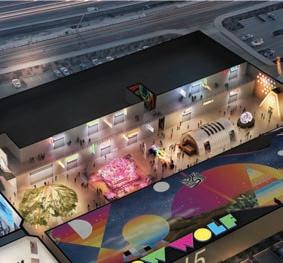
An aerial view of AREA15.
overblown distraction, while the other views it as a real health risk. “Be very thoughtful and deliberate about understanding what your customers are going to expect from you and then what are the risks and rewards.”
One of the most visible, polarizing arguments is in regards to the wearing of masks. Some states mandate the wearing of masks in public places, but in others, it’s only a suggestion. Is your bar going to require that masks be worn or not?
Taffer says whether a bar enforces mask wearing or not can impact a guest’s decision to patronize the establishment. For example, if a patron believes wearing masks is the right thing to do and then sees a group of people at your bar without them, they are unlikely to patronize your establishment—no matter what other safety protocols you may have in place.
This is where it becomes extremely important to know your customer base. Gabor says a bar owner should ask themselves a series of questions: “Who is your ideal customer? Who does your bar ultimately cater to? Who are you for? Who is this brand for? What is that person like? What do you think their values and beliefs are? How do you think they would expect you to show up upon opening? And then use those answers to frame the decision.”
Once you have a clear picture of your target customer, Taffer says bars should approach the decision of masks or no masks like anything else in their bar: music, food, etc. “We make these
decisions as an industry every day,” he says. “Are you a country bar or a rock-and-roll bar? Today, are you a mask bar or a no-mask bar? The magnitude of the decision is no greater than the music decisions that we make and the other decisions that we make that not only target an audience, but chase one away.”
It can be easy to view all of this change as a bad thing, but Winston Fisher, CEO of AREA15 and partner at Fisher Brothers, challenges owners to change their perceptions. “There’s time to innovate now. There’s time to think about better engagement—how would we do things different, what do we want, what are people looking for, how do we help them celebrate, how do we be more to them than just a restaurant but actually a place that has an emotional connection?” he says. “All this has done is given us time to focus more on how to improve and build better connections.”
First and foremost will be getting people back through the door. “Now that we have opened the channel for America to have our food and beverage menus delivered to the comfort of their homes, we really need to focus much more vigilantly than we ever have in any of our lifetimes on creating a compelling guest experience so that they will be inclined to come back inside of our four walls,” says Ellis.
Taffer recommends offering incentives for takeout and delivery customers to help ease the transition back to indoor dining. “If you have delivery services, I would be couponing everything for eating inside,” says Taffer. “I wouldn’t be giving
THE END OF ON-PREMISE JUICING.
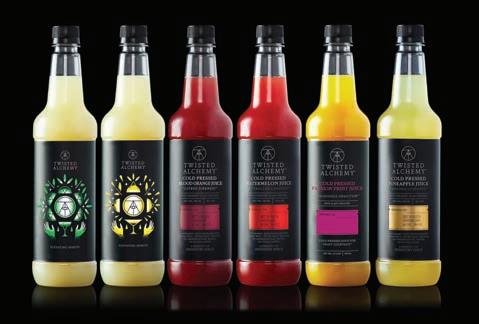
With food safety being the critical factor during these times, Twisted Alchemy delivers award winning, fresh squeezed juice with the safety of HPP. In addition to managed Brix and pH levels for consistency, you won't need any labor for on-premise juicing. Start elevating your craft cocktail menu... at the bar, curbside and to-go. Cold Pressed Twisted Alchemy Juices & Craft Mixers.
COLD PRESSED JUICE FOR CRAFT COCKTAILS™ Check out our alchemist’s recipes and inspired virtual live events! twistedalchemy.com | instagram.com/drinktwistedalchemy discounts for delivery, but every bag you got from me would have something in it to get you inside.”
Creating authentic, unique experiences will still be key. “People who have good product are going to thrive. If you didn’t have good product, and you didn’t build strong customer relations, and you took people for granted, you might not do so well today,” says Fisher “But if you’re the place that’s selling a genuine, authentic cool thing and people need it, they’re going to flock to you in a heartbeat.”
At AREA15, a new, 200,000-square-foot entertainment-andexperience attraction opening in September, they were focused on creating a best-in-class experience prior to the pandemic. In one complex, AREA15 builds an immersive experience through art, technology, entertainment, food and beverage, and live events. Although COVID-19 pushed back its inaugural schedule of events, the facility is focused more than ever on providing an experience that transports the guest—safely—by following all of the recommended social distancing guidelines. “It was always a place that was going to take you out of yourself and bring you to a land of wonder,” says Fisher. “So I think the guest experience now more than ever is going to change by being needed more than ever because of what’s happening.”
Some innovations may not require as sprawling and large of a concept, but rather the opposite— smaller, more intimate experiences. “I’m curious about what bar owners are going to do to be able to create smaller experiences, or more intimate types of experiences,” says Gabor. “Are they going to reconfigure their physical space to have people gather in maybe smaller groups like dyads and triads? I think that maybe we’ll see more outdoor spaces or new configurations. Now is the time for new business models.”
Ellis recently released a revival guide with strategy and tactics for moving forward. Above all, he advises bar owners to consider a business model that is flexible and future-proof as our current environment is defined by unpredictability and rapid change.
“Be agile and remember that consumer confidence is and will continue to be a moving target for some time,” says Ellis. “Before you go off and spend whatever amount of money permanently rebuilding your spaces for social distancing and Plexiglas barriers, realize that as medical science evolves on this and we learn more, that may not be the answer. And you may have just spent a lot of money, a lot of time, and a lot of effort sort of unraveling the immersion of your space hoping that it would bring back guests in droves, and all of a sudden it’s pointless.”
Ellis encourages owners to think bigger—to systemic changes. “Our industry was dismantled in about ten days,” he says. “The thinking that got us in this mess is not going to be the thinking that gets us out of it.”
Ellis says this isn’t a problem for “duct tape” or simple solutions. Instead, work needs to be done on the big issues like rent, financial literacy, health and wellness, and health insurance and other protections for workers. “You do the hard work of digging into the problems, you do a lot of listening, a lot of understanding, a lot of sharing of information and ideas,” he says, “and we start developing strategies and figuring out how to work our way out of this over time, moving the needle as we can to protect ourselves in the future.”






